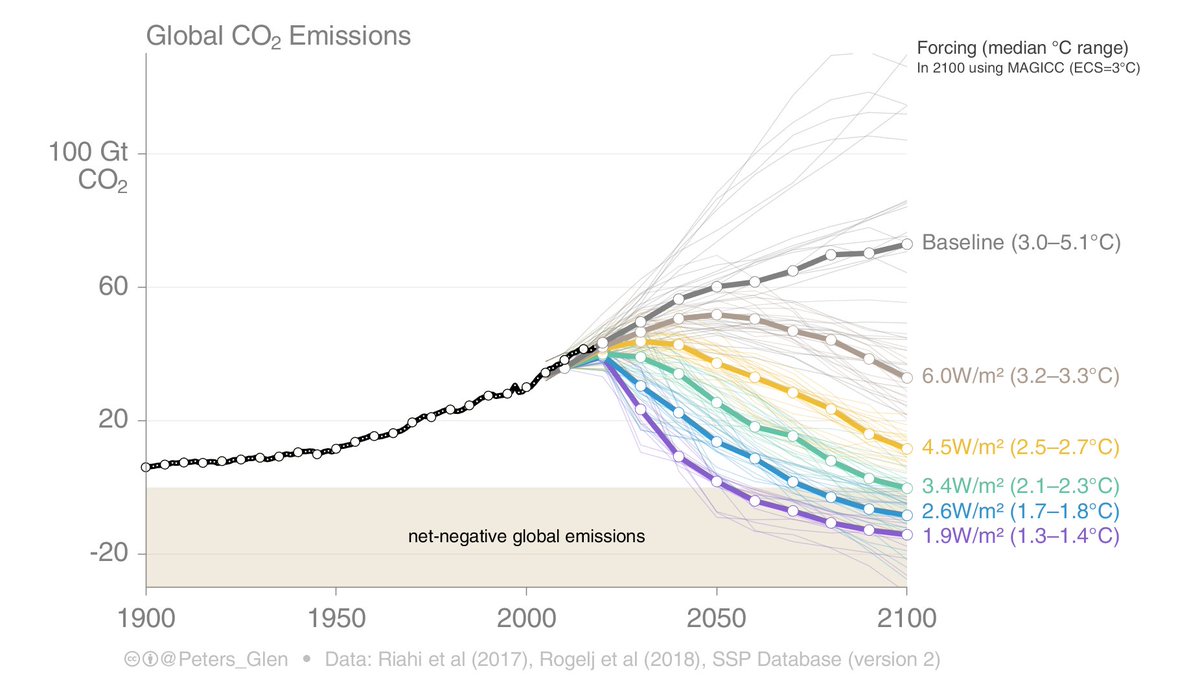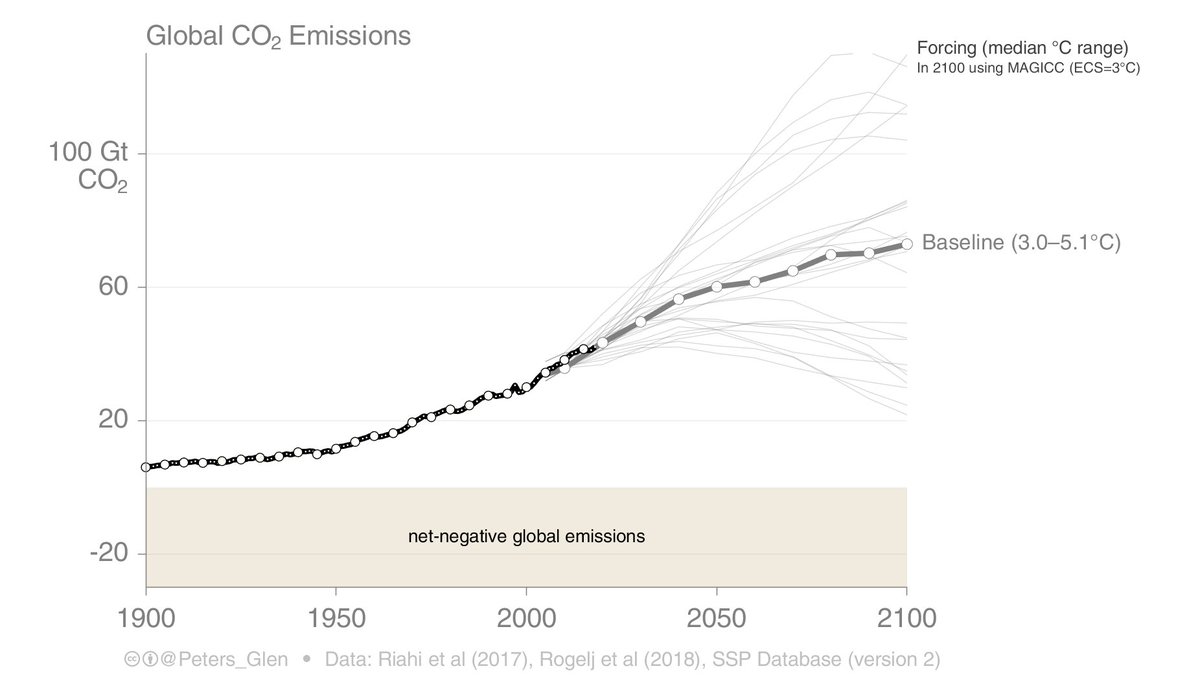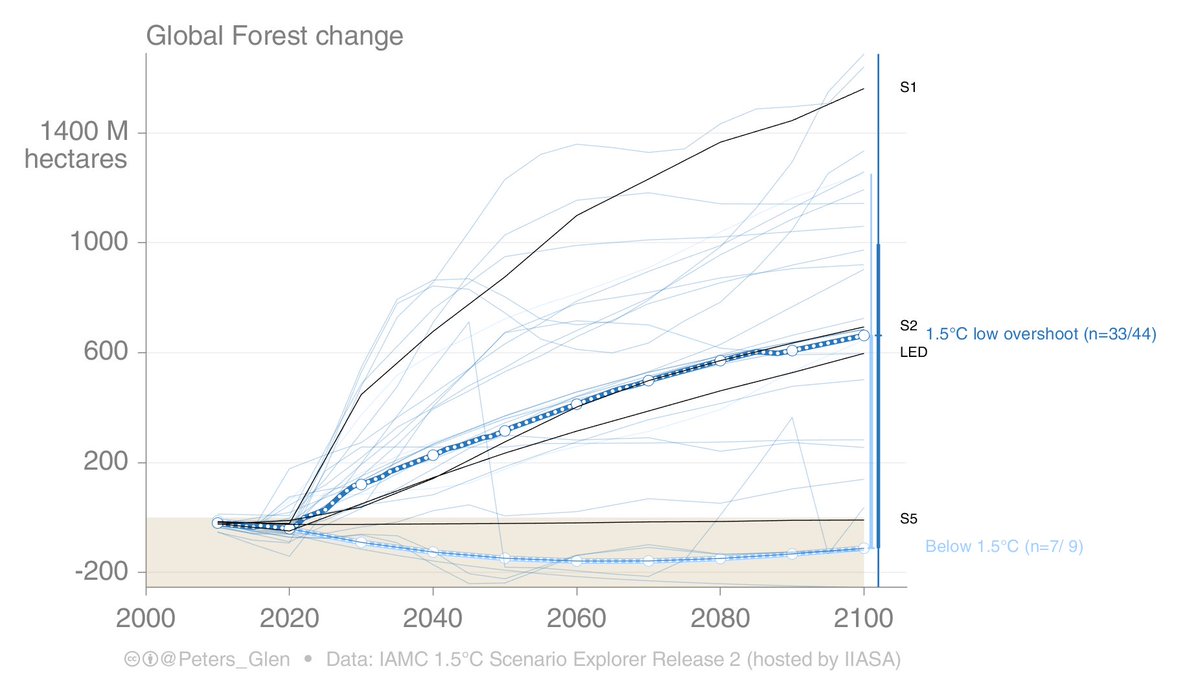
A new estimate of fossil CO₂ emissions in 2020 from @Carbon_Monitor, showing a decline in the full year of 5.4% (1900MtCO₂).
The dip was largest in the first COVID19 wave in ~April, but at the end of 2020, monthly emissions were similar to 2019.
1/
arxiv.org/abs/2103.02526
The dip was largest in the first COVID19 wave in ~April, but at the end of 2020, monthly emissions were similar to 2019.
1/
arxiv.org/abs/2103.02526

The analysis covers all major emitters
* China the only major nation with grow (+0.5%), with end-of-year monthly emissions exciting 2019 levels
* USA: Down 9.4%
* EU27+UK: Down 7.5%
* India: Down 8.1%
The COVID declines build on top of preexisting trends.
2/
* China the only major nation with grow (+0.5%), with end-of-year monthly emissions exciting 2019 levels
* USA: Down 9.4%
* EU27+UK: Down 7.5%
* India: Down 8.1%
The COVID declines build on top of preexisting trends.
2/

Transport was the major driver of change:
* Ground transport was 37% of the decline
* International transport was 28%, despite representing 2-3% of global emissions
The power sector was 18% of the decline, but monthly emissions are already back to 2019 levels (globally).
3/
* Ground transport was 37% of the decline
* International transport was 28%, despite representing 2-3% of global emissions
The power sector was 18% of the decline, but monthly emissions are already back to 2019 levels (globally).
3/

The estimates are consistent with other recent estimates:
* @robbie_andrew @CICERO_klima 5.6%
* @clequere with 7% (isolating only COVID effects) nature.com/articles/s4155…
* @IEA with 5.9% (5.6% after leap-year adjustment)
4/
* @robbie_andrew @CICERO_klima 5.6%
https://twitter.com/robbie_andrew/status/1367405125581606913
* @clequere with 7% (isolating only COVID effects) nature.com/articles/s4155…
* @IEA with 5.9% (5.6% after leap-year adjustment)
https://twitter.com/Peters_Glen/status/1366665092838875143
4/

Check out the article, though, do note that it is a preprint working through the review process. It does however use methods previously published...
arxiv.org/abs/2103.02526
5/5
arxiv.org/abs/2103.02526
5/5
• • •
Missing some Tweet in this thread? You can try to
force a refresh
















